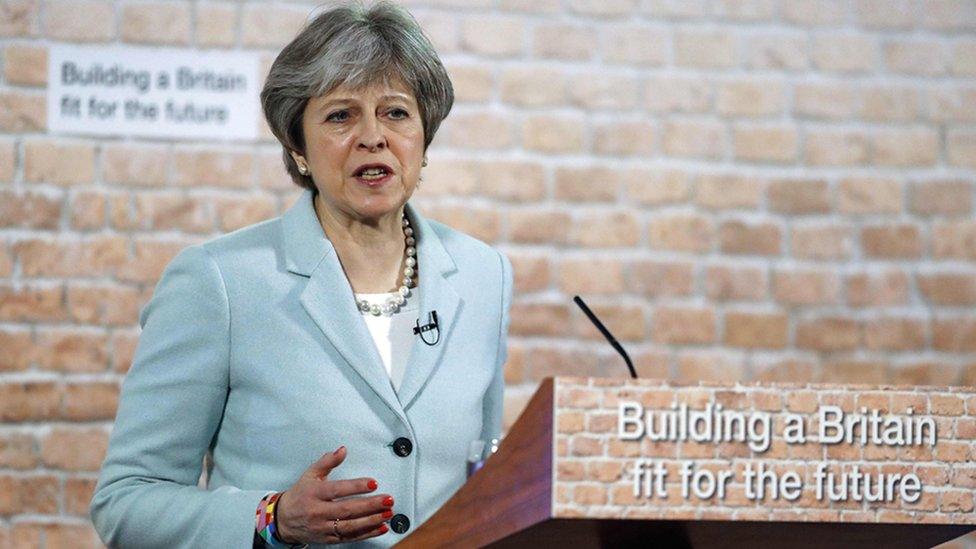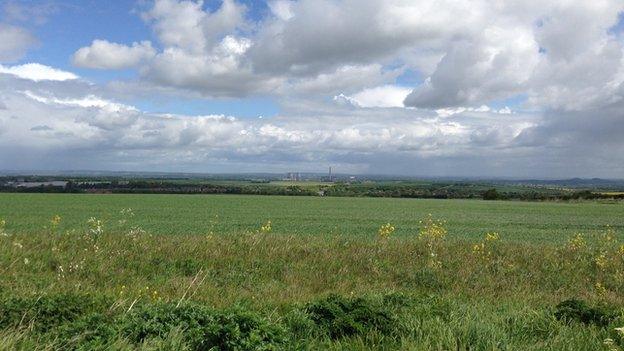Affordable homes on green belt 'a lie', say campaigners
- Published

Plans to build 460,000 homes on land released from the green belt will not help young families get on to the property ladder, say campaigners.
The Campaign to Protect Rural England said 78% of planned developments on greenfield sites do not fall under the government's "affordable" definition.
Its director said people are "being sold a lie" and will "go on struggling to afford a place to live".
A government spokesman said green belt protections were being strengthened.
He added that the green belt is around 30,000 hectares larger than in 1997 and councils can only make changes to its boundaries in "exceptional circumstances".
CPRE argues that more brownfield sites should be used instead - claiming they could accommodate more than one million homes in England.
It also said local authorities with green belt land have enough brownfield sites for 720,000 homes.

What is the green belt?

Green belts were introduced after World War Two to stop cities from sprawling and countryside being spoilt. There are tight controls on building in these areas.
About 13% of England is now covered and the 14 green belt areas are meant to be permanently protected - and are only reviewed in exceptional circumstances.
They include scenic sites open to the public, such as the Chiltern Hills and North Downs. But it also covers a lot of land that has limited public access and may not be particularly beautiful.
Brownfield sites are often on disused or derelict land, but they are often more expensive to build on as the land needs to be cleared first.

New analysis by the CPRE claimed that 72% of homes built on sites within the green belt last year could not be classed as "affordable" under the government's own definition.
They now warn this will rise by 6% this year as the government ups the number of homes it is building.
The group also claimed 7,600 affordable homes needed to be built in the countryside annually - but its figures showed only 990 were built last year.
The CPRE's director of campaigns and policy, Tom Fyans, said: "We are being sold a lie by many developers.
"As they sell off and gobble up the green belt to build low density, unaffordable housing, young families go on struggling to afford a place to live."
Green belt 'eroded'
Mr Fyans said the affordable housing crisis must be addressed "with increasing urgency", but that building on green belt sites does not provide the solution, instead "entrenching the issue."
He added: "The government is failing in its commitment to protect the green belt - it is being eroded at an alarming rate.
"But it is essential, if the green belt is to fulfil its main purposes and provide 30 million of us with access to the benefits of the countryside, that the redevelopment of brownfield land is prioritised, and green belt protection strengthened."
Green belt land accounts for 13% of the land area of England
The government said it was protecting green belt sites in the countryside.
A spokesman from the Housing, Communities and Local Government department said: "We are clear that building the homes our country needs does not mean tearing up our countryside.
"Last year the number of new homes built was the highest in a decade, and only 0.02% of the green belt was developed for residential use.
"We are adding more certainty to the planning system and our new planning rulebook strengthens national protections for the green belt, and says that councils may only alter boundaries in exceptional circumstances once they have looked at all other options."
- Published5 March 2018

- Published9 June 2015
